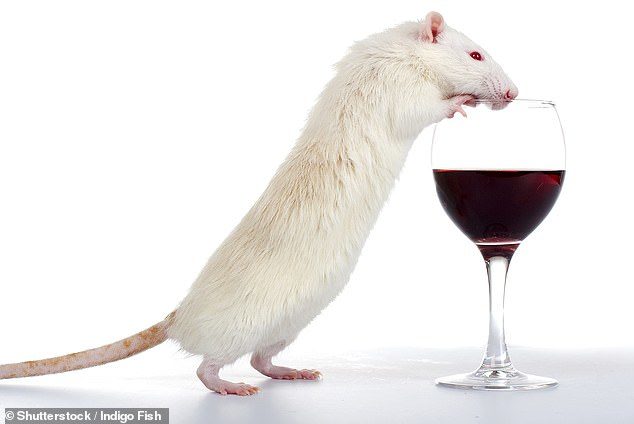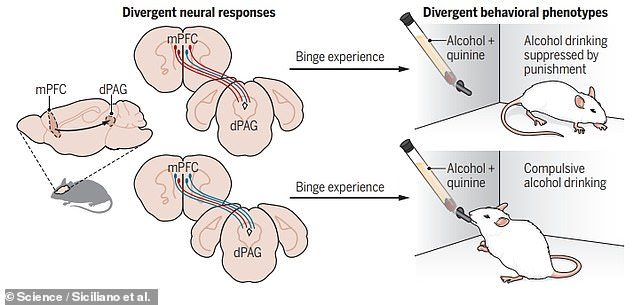
The team's discovery in mice, if translated to humans, may provide doctors a way to reveal whether someone is likely to become a compulsive drinking later in life.
Alcoholism is a chronic brain disease in which an individual drinks compulsively — often accompanied by negative emotions.
Whereas previous studies have focused on examining the brain after a drinking disorder develops, the researchers from the Salk Institute in California set out to prove that brain circuits can make some people more likely to be alcoholics.
'We've found for the first time a brain circuit that can accurately predict which mice will develop compulsive drinking — weeks before the behaviour starts,' said lead researcher and neuroscientist Kay Tye.
'This research bridges the gap between circuit analysis and alcohol/addiction research, and provides a first glimpse at how representations of compulsive drinking develop across time in the brain.'
'We initially sought to understand how the brain is altered by binge drinking to drive compulsive alcohol consumption,' said paper author and pharmacologist Cody Siciliano of the Vanderbilt University in Nashville, Tennessee.
'In the process, we stumbled across a surprising finding where we were actually able to predict which animals would become compulsive based on neutral activity during the very first time they drank.'
The researchers created a test — known as a 'binge-induced compulsion task' — to examine how susceptibility towards alcohol consumption interacts with experience to produce compulsive drinking in mice.
They observed that mice could be sorted into three groups, that of low drinkers, high drinkers and compulsive drinkers.
Unlike the first two groups, the compulsive drinkers showed an insensitivity to negative consequences.

They looked specifically at neuron activity in two regions of the brain involved in behavioural control and responding to adverse events — the medial prefrontal cortex and the periaqueductal grey matter, respectively.
They found that the development of compulsive alcohol drinking was related to communication patterns between these two brain regions — and that such can serve as a biomarker for predicting compulsive drinking in the future.
The researchers also used a technique dubbed 'optogenetics' to manipulate the activity of the neural pathway using light.
By turning the brain circuit on or off, the scientists were able to either increase compulsive drinking tendencies, or reduce it.
'Now, we can look into the brain and find activity patterns that predict if mice will become compulsive drinkers in the future, before the compulsion develops,' added Professor Tye.
'We do not know if this brain circuit is specific to alcohol or if the same circuit is involved in multiple different compulsive behaviours,' she added.
These, she explained, might include 'those related to other substances of abuse or natural rewards, so that is something we need to investigate.'
The full findings of the study were published in the journal Science.



Comment: Researchers test Ecstasy as possible treatment for alcoholism
Can zapping the brain with lasers cure alcoholism? Scripps scientists think so
Alcoholism: LSD is Possible Viable Treatment Researchers Say